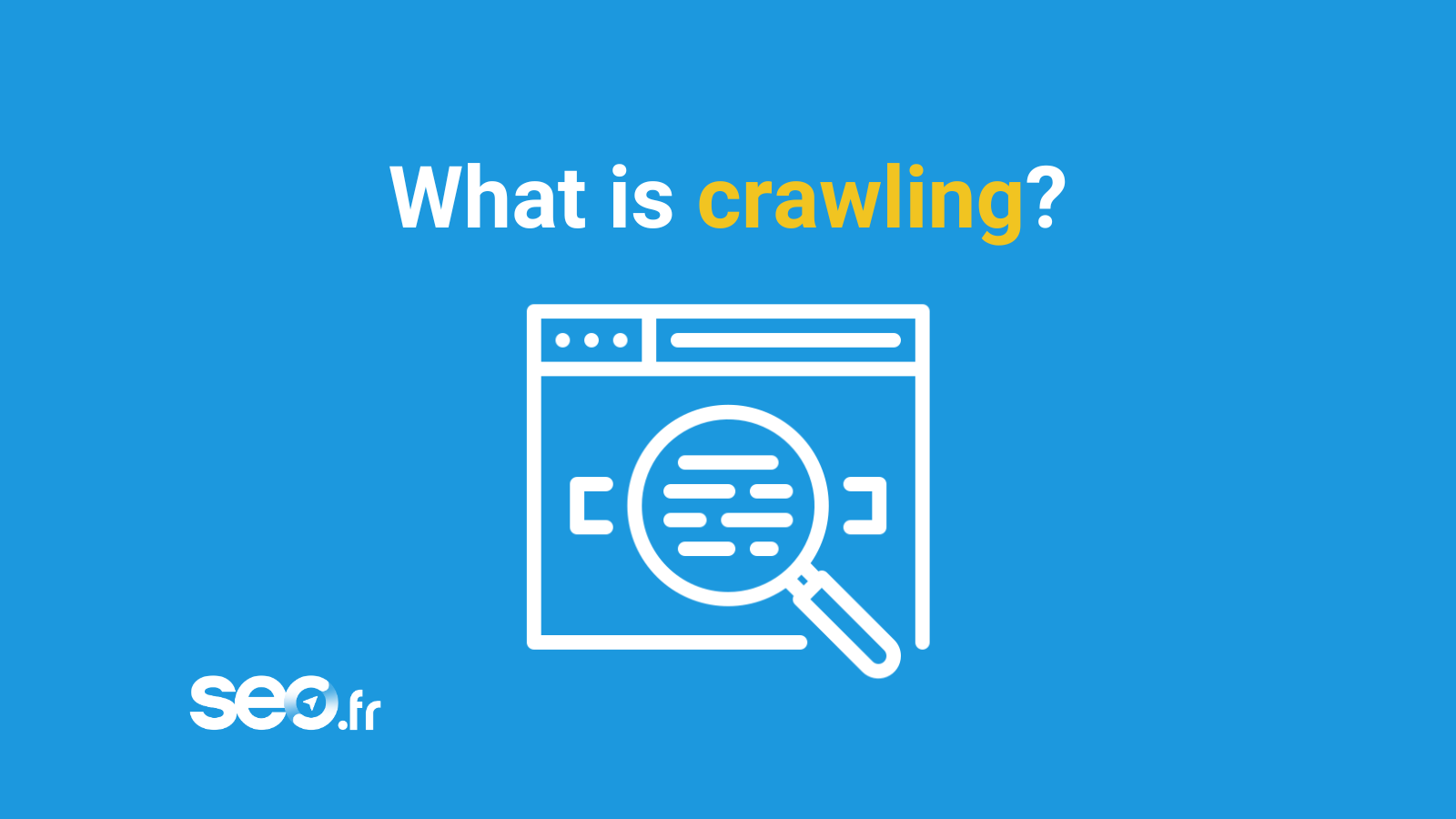To improve search engine positioning, it’s essential to take crawling into account. The process of crawling web pages is rarely mentioned. Yet it’s an important factor in the SEO of your web site.
To provide users with relevant search results, Google uses a site crawler. Google crawling encourages the exploration and indexing of pages on search engines.
As a result, Internet users find results pages that match their search intent. But how does the SEO crawl work? What are the key factors in a good website crawl? How important is a crawl budget in an SEO strategy? If you’re looking for effective SEO practices to improve a site’s visibility, read this article to the end.
What is crawling?
Google crawling is a process that precedes the display of results pages when Internet users launch a search. It’s a stage in which search engine robots discover, crawl and index new web pages in response to a search intent.
This process, also known as spidering, enables crawlers and indexing robots to access your site’s web pages and gather a wealth of information. They crawl several sites to index their pages. How do they do it?
To explore and index web pages, crawlers and spiders follow the links between pages. When they visit a site, they evaluate its content and then go to the links. In this way, they automatically redirect to other content pages.
Crawling refers to the crawling and reading performed by the robots of the various search engines before the site is indexed. Google’s crawler, known as Googlebot, and Bing’s crawler, known as Bingbot, crawl several web pages before indexing them on their servers.
As you can see, search engine crawling precedes site positioning on the SERP. The crawling technique focuses on several factors:
- Links (backlinks and internal and external meshing)
- Website content
- Domain names
- XML files
- SEO content
- Canonical urls
- Meta-tags

How does a crawler work?
Crawling requires the action of a crawler, but how does a crawler work? The crawler is an automated program designed by search engines to scan the entire web for data. It evaluates content and stores information in databases and indexes. What’s the purpose? The aim is to optimize search engine performance.
In fact, when a user types a query into the search bar, the search engine draws on its index of web pages. On this basis, it is able to propose and display results pages that precisely match the search intention or keyword used by the user.
It’s worth pointing out, however, that crawling does not take place in the same way for all sites. Web showcases with an accessible structure are easier for robots to navigate than sites that use HTML code. We’ll come back to the levers of good web crawling in a moment.
As for how the crawler works, remember that it is programmed to perform the following actions:
- Search data
- Discover data
- Collect data on the web.
Want to know more about how Google crawling works? SEO.fr shows you the steps involved in the crawling process.
Understanding SEO crawling with Googlebot robots
To search the web for new content to browse, crawlers move from web page to web page, just like Internet users. At this crawling stage, robots move from URL to URL, paying particular attention to the internal links between pages.
It’s no coincidence that Google’s crawlers are interested in internal links. Indeed, crawlers are able to visit the many pages of a site by following the links.
Furthermore, in SEO, internal linking plays a decisive role. It helps increase the PageRank of certain pages considered strategic. It facilitates the transfer of popularity from the home page to the deeper pages of your site. It can also be an important factor in the internal circulation of link juice. So, good internal netlinking management can help you to be visible on Google.
Perhaps you’d like to make it easier for robots to crawl your pages, and get them indexed quickly? Make crawling easier by manually submitting your site map to Google Search Console. By doing so, they’ll easily find your web pages and be able to crawl and collect data from them.
What does the crawler do on a website?
The indexing robot reads and analyzes the relevance of the pages crawled by the crawlers. After that, it downloads and archives the content to feed their index for subsequent searches. Remember, spiders can’t directly read the content of a web page. They use metadata to understand the subject matter and then index it. So, if you want your pages to benefit from good crawling and indexing, optimize them. For example, if you use images to accompany the textual content of your website, remember to use an ALT attribute.
You’ve created your website, but you don’t think any robots have crawled it? Would you like to know whether your web pages are already indexed by Google? Here are 3 simple and effective tips for checking your site on Google.
- Use Google’s “site:” command. The “site: sitename.com” command consists of inserting your site’s URL into the Google search bar, in order to detect the number of pages indexed by the search engine. If your site isn’t crawling well and isn’t registering the passage of spiders, you’ll simply receive a message informing you that there’s an indexing problem with your site.
- Check your Google Search Console account. In the “search index” section you’ll find the number of pages on your site that are indexed, and information about indexing errors.
- Use positioning tracking tools such as Ahrefs, Semrush, Myposeo, Ranks.
Got an SEO question?
Julia can help
7 years of SEO expertise

What are the key factors for a good crawl?
Are you looking for ways to create better conditions for successful crawling and indexing of your web pages? To begin with, Google’s algorithm focuses on the appropriateness of the technique used to crawl a site. It analyzes the site’s structure and detects whether it is accessible and easy to navigate.
Next, he examines the quality of the content and identifies whether it meets the user’s search focus. The focus is on the user experience. If you want to rank higher in the search engines, it’s important to improve your content and respond well to user queries.
Site visibility is another key factor in crawling. The popularity of a web page lets crawlers know whether it’s an authority on a given topic. If you want your site to be popular and attract crawlers, opt for quality backlinks.
For a good Google crawling, remember to :
- Setting up an optimized site URL to simplify reading and comprehension by robots.
- Improving the size of images used in your content to benefit from a significant reduction in site loading time.
- The judicious use of tags. Title tags, description tags, meta description tags, author tags and other metadata all provide additional information for crawling and page indexing.
- Insertion of a sitemap on each page to facilitate crawling. This XML file, present in all CMS, is used to inform Google of any updates to your site.
- Avoid duplicate content to avoid penalties from the Panda and Penguin algorithms.
- Keep abreast of Google’s algorithmic updates.
The importance of a crawl budget for SEO
The crawl budget plays an essential role in a site’s visibility strategy, and can promote good search engine ranking. When you have a high budget, you maximize your chances of crawling.
The robots can then crawl and index several pages of your site, giving you greater visibility in search engines. In addition to promoting better indexing, good crawl budget management allows you to prioritize content. You give Googlebots access to important pages on your site, or to fresh content.
A well-managed crawl budget also enables you to optimize and considerably maintain your site’s performance. To achieve this, work on your site’s SEO with an SEO agency and benefit from the support of an experienced SEO consultant.









